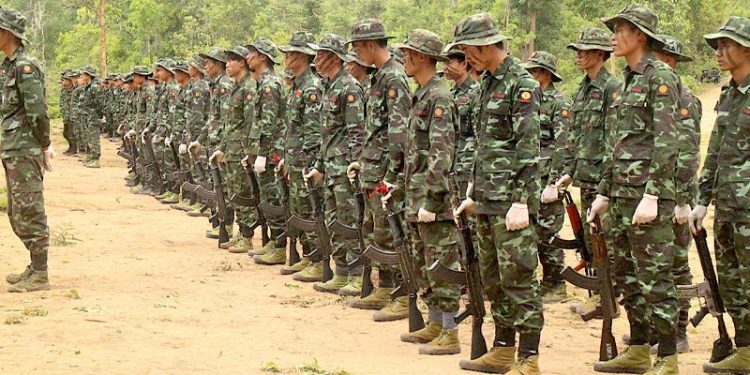The Karenni Nationalities Defense Force (KNDF) has emerged as the strongest resistance group fighting the Myanmar military regime in Kayah (Karenni) State.
Kayah State has only seven townships and a population of just 300,000 people. But despite being the smallest state in terms of size, Kayah has become a major stronghold of armed resistance against the junta.
Geographically, Kayah State borders Naypyitaw, the administrative seat of the junta generals. The KNDF’s rapid growth in a short period has made it a thorn in the side for generals in Naypyitaw.
Establishment of KNDF
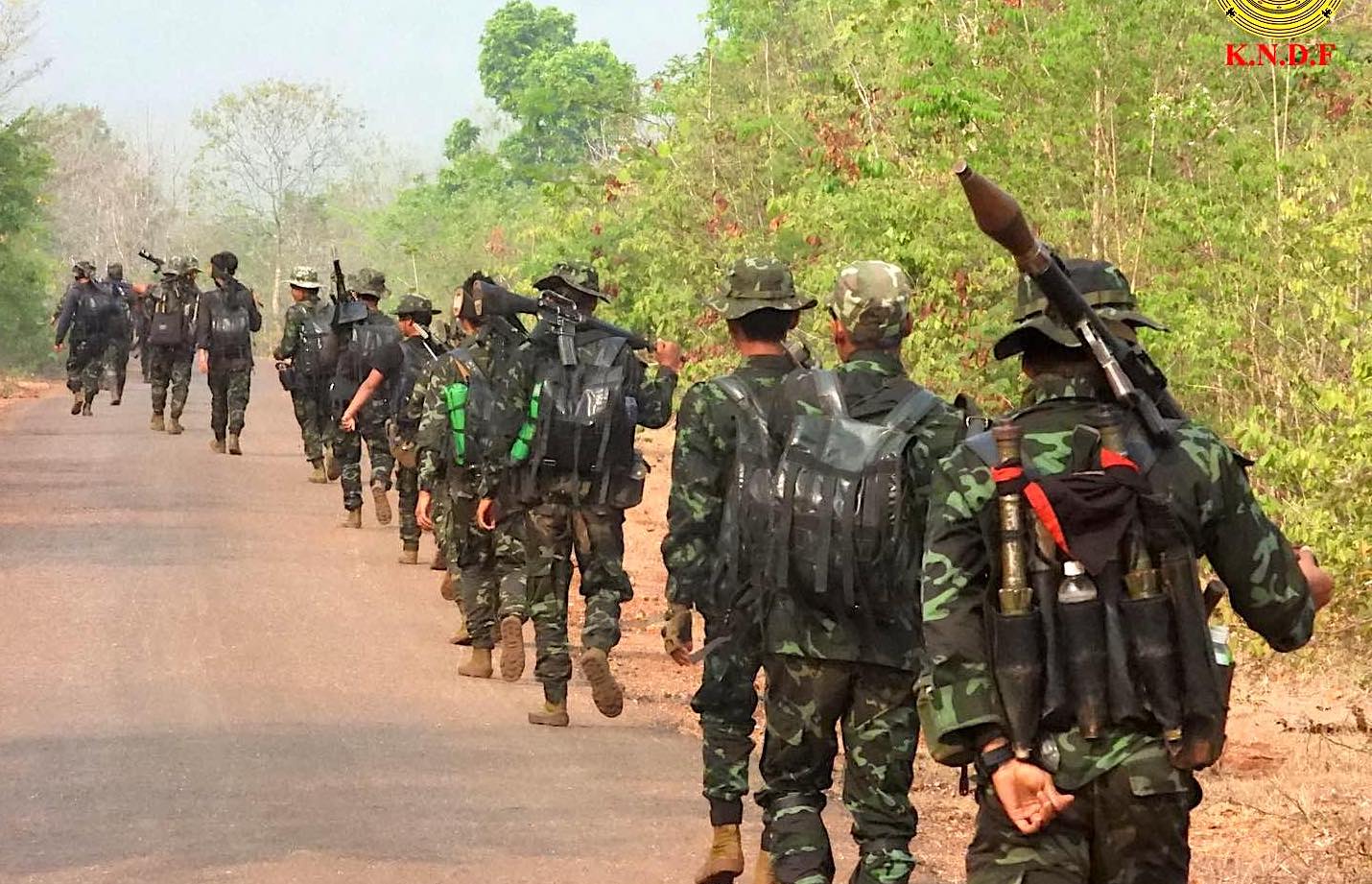
The KNDF was born out of Kayah’s anti-coup public protest committee, formed after the February 2021 military takeover. Following the brutal military crackdown on peaceful protests, the committee decided to take up arms against the regime. Protesters started to undergo military training in the first week of March 2021, according to the KNDF’s manifesto.
The Karenni State Consultative Council (KSCC) was established on April 9, 2021. The KSCC consists of ethnic armed organizations (EAOs), lawmakers elected in the 2020 general election, political parties, civil society organizations, youth and women’s organizations and experts based in Karenni State. The stated purpose of the KSCC is to form a Karenni national government, provide guidelines for the executive, legislative and judicial branches in Karenni State, and collaborate with the National Unity Consultative Council and the civilian National Unity Government.
Four battalions were formed under the name of the Karenni State Army (KSA) in the first week of May 2021. The KSA carried out its first attack on junta forces in Demoso Township. New resistance groups emerged in Karenni State following the attack. With political guidance from the KSCC, the KSA and other resistance groups combined into the KNDF on May 31, 2021.
The KNDF is led by Khun Be Du, the former chairman of the Kayan National Party. He also serves as vice-chair of the recently formed Karenni State Interim Executive Council (IEC).
Commander-in-chief of the KNDF is Major-General Aung Myat, who is also chief of the Karenni Army (KA), the armed wing of Karenni National Progressive Party. The KA provides military training for the KNDF.
Political stand
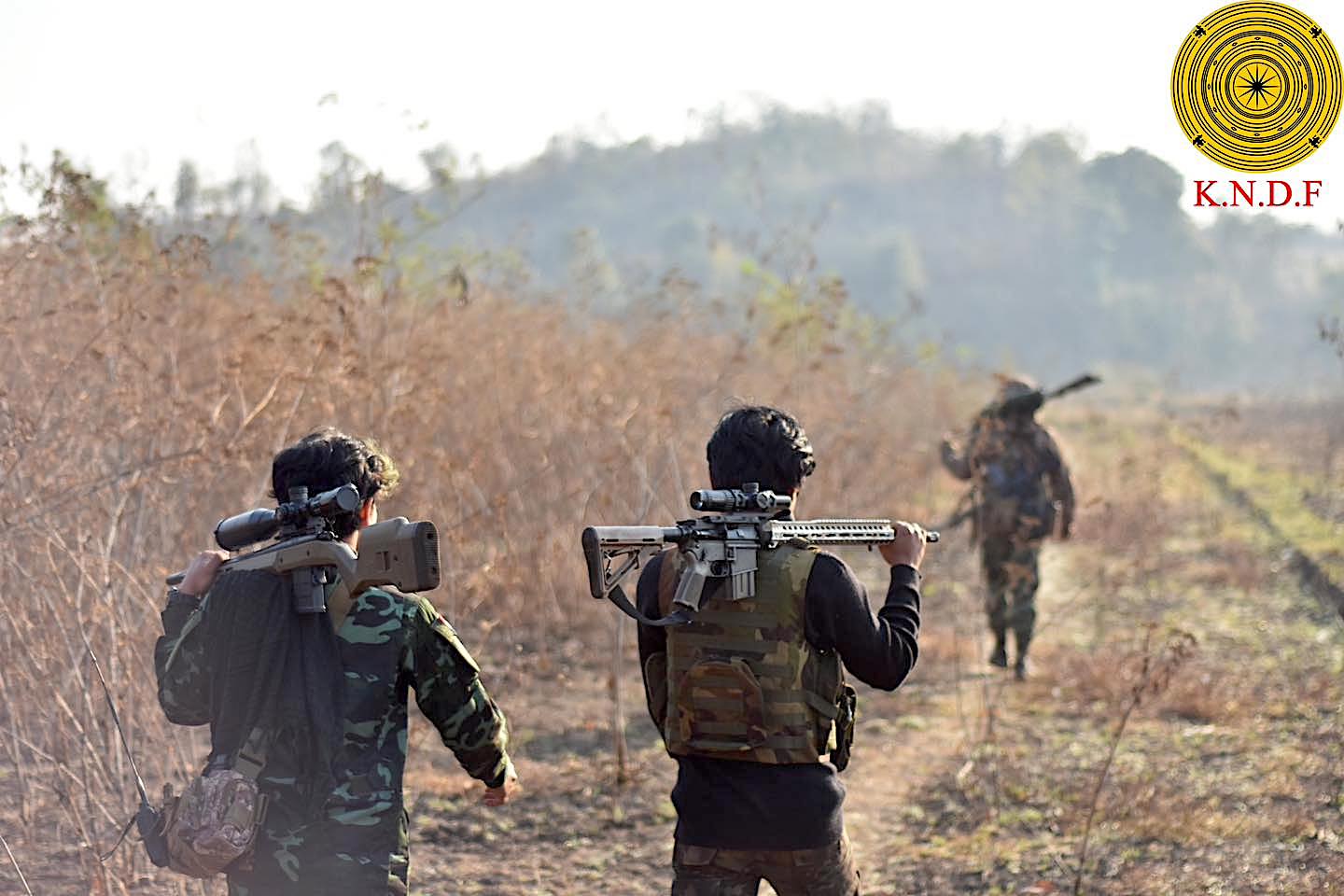
The KNDF considers Karenni State to comprise of today’s Kayah State, Moebye, Pekon and Paunglaung in southern Shan State, and mountains in the east of Naypyitaw’s Pyinmana, and to the north of Leiktho in Karen State. The KNDF has publicly declared its intention to unify these areas as Karenni State.
The KNDF supports federalism, or power-sharing between the Union and state governments with self-determination and self-administration for ethnic states.
Khun Be Du, in his address to mark the 2nd anniversary of the KNDF on May 31, said the group would continue to collaborate with the NUCC, the NUG and its parliamentary wing, the Committee Representing Pyidaungsu Hluttaw (CRPH).
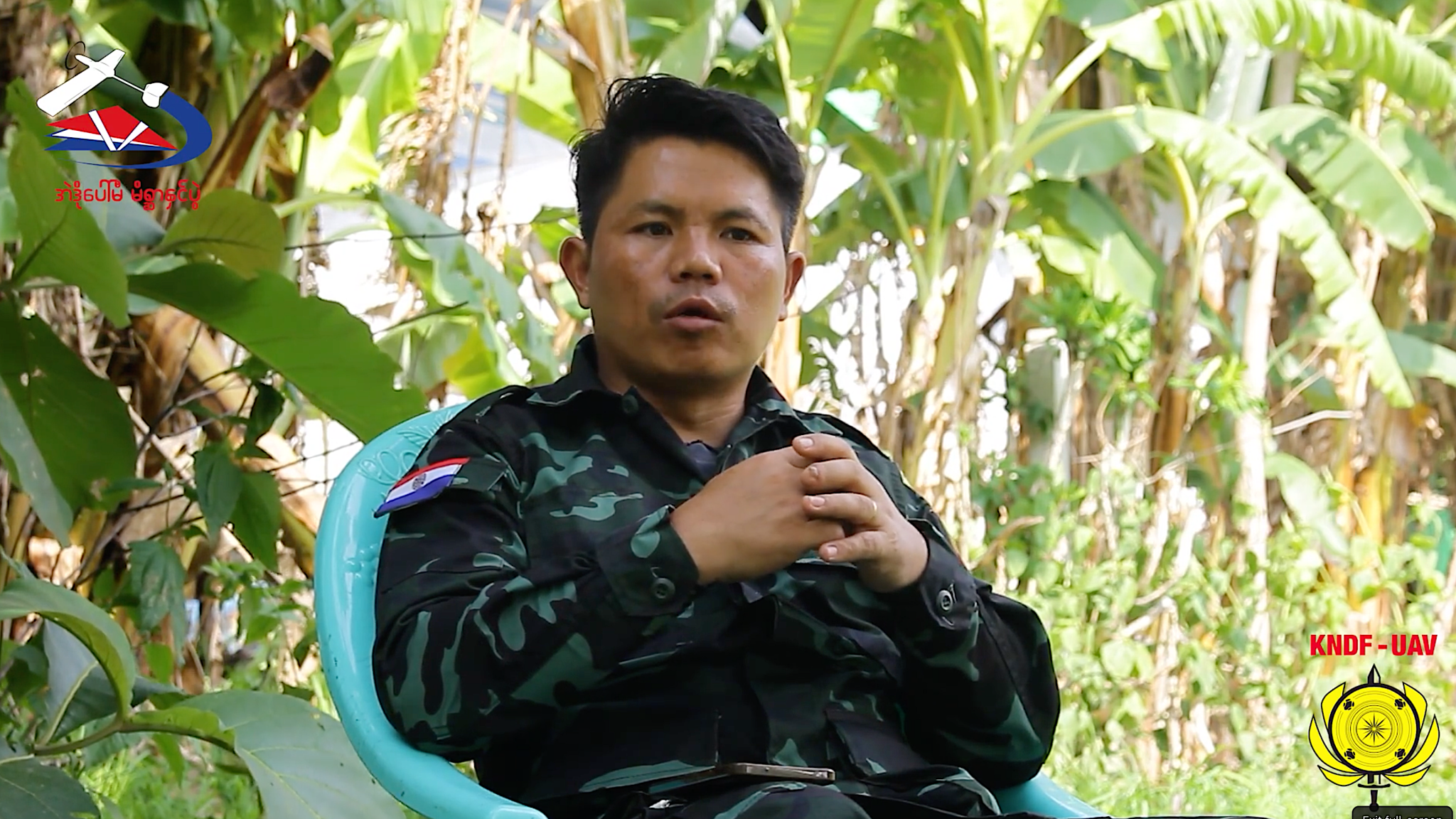
“We have to reject military rule and build an administration that represents Karenni people. It is a tough challenge to achieve political objectives by military means. But there is no other option except to fight the junta administration with arms,” said Khun Be Du.
After the Spring Revolution succeeds in ousting the junta, the KNDF will serve as the armed forces of Karenni State under the constitution of a future federal Union, according to KNDF’s manifesto.
The state’s Interim Executive Council was established on June 6 this year. It will manage the state and oversee cooperation among its different anti-regime forces for the duration of the revolution, it announced.
KNDF’s combat capability
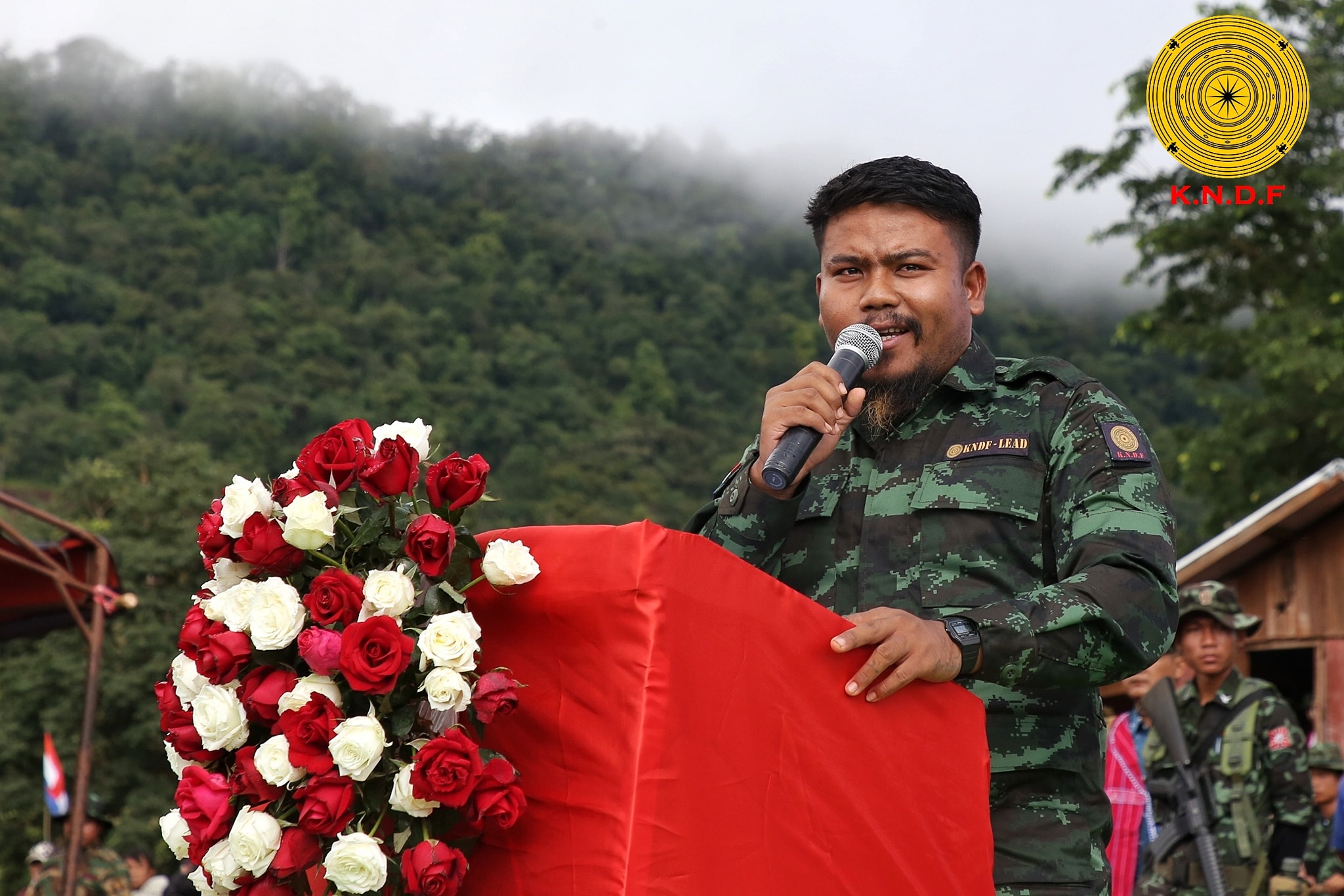
Although the KNDF was only formed two years ago, it has become the strongest and largest armed group in Karenni State.
While the KA, which has trained the KNDF, has only 3,000 troops, the KNDF now boasts 22 battalions with over 7,000 troops.
Although the KNDF has not publicly revealed its weaponry, the majority of its troops fighting on the front line are armed with automatic rifles, according to a source familiar with the matter. The KNDF has solicited donations from the public to purchase machine guns.
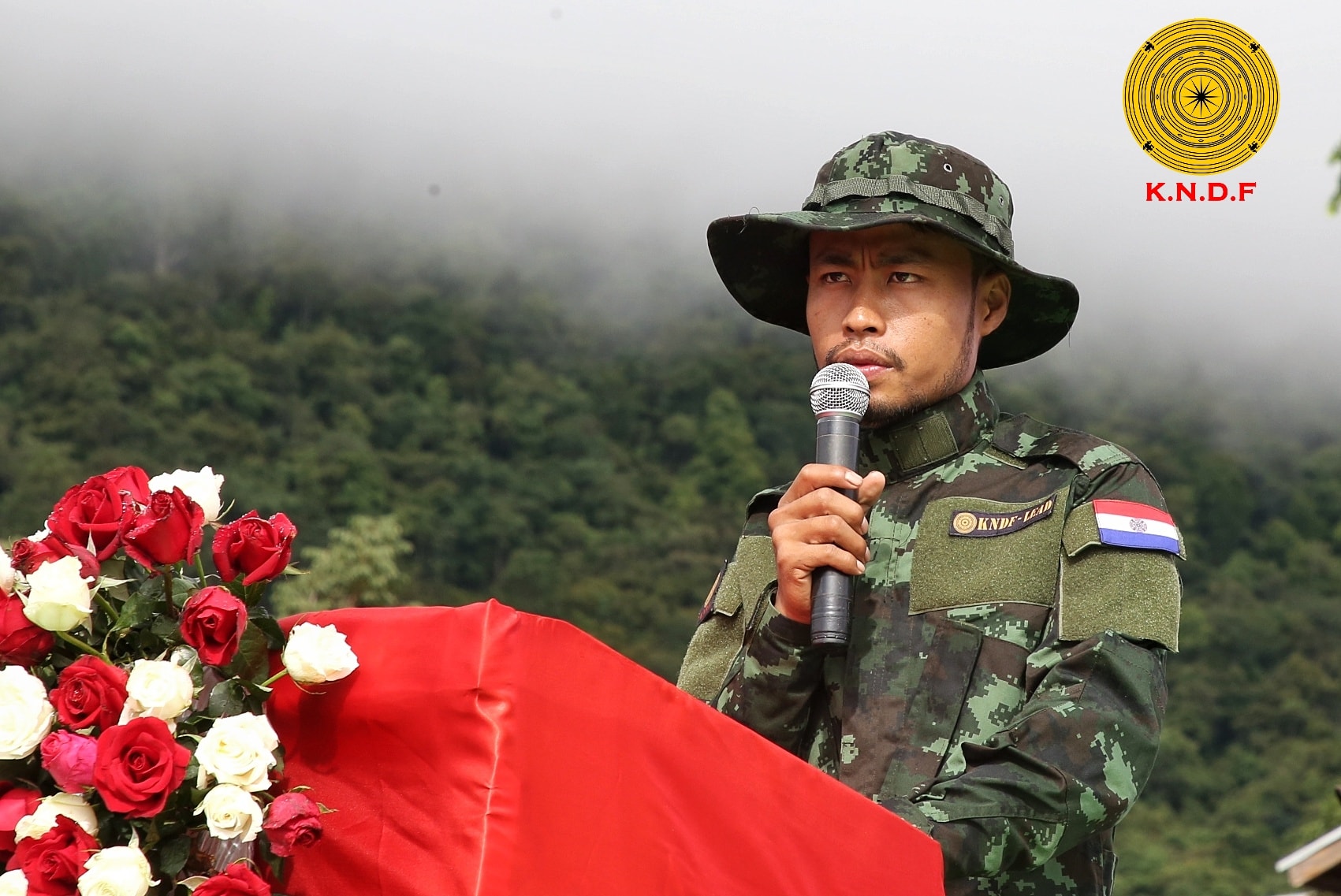
The KNDF has also received military training from the Karen National Liberation Army, the armed wing of the Karen National Union, as well as material assistance from three other EAOs – the Myanmar National Democratic Alliance Army, Arakan Army, and Ta’ang National Liberation Army.
KNDF’s membership spans various ethnic groups and religions, and the group has won respect from the old, powerful EAOs.
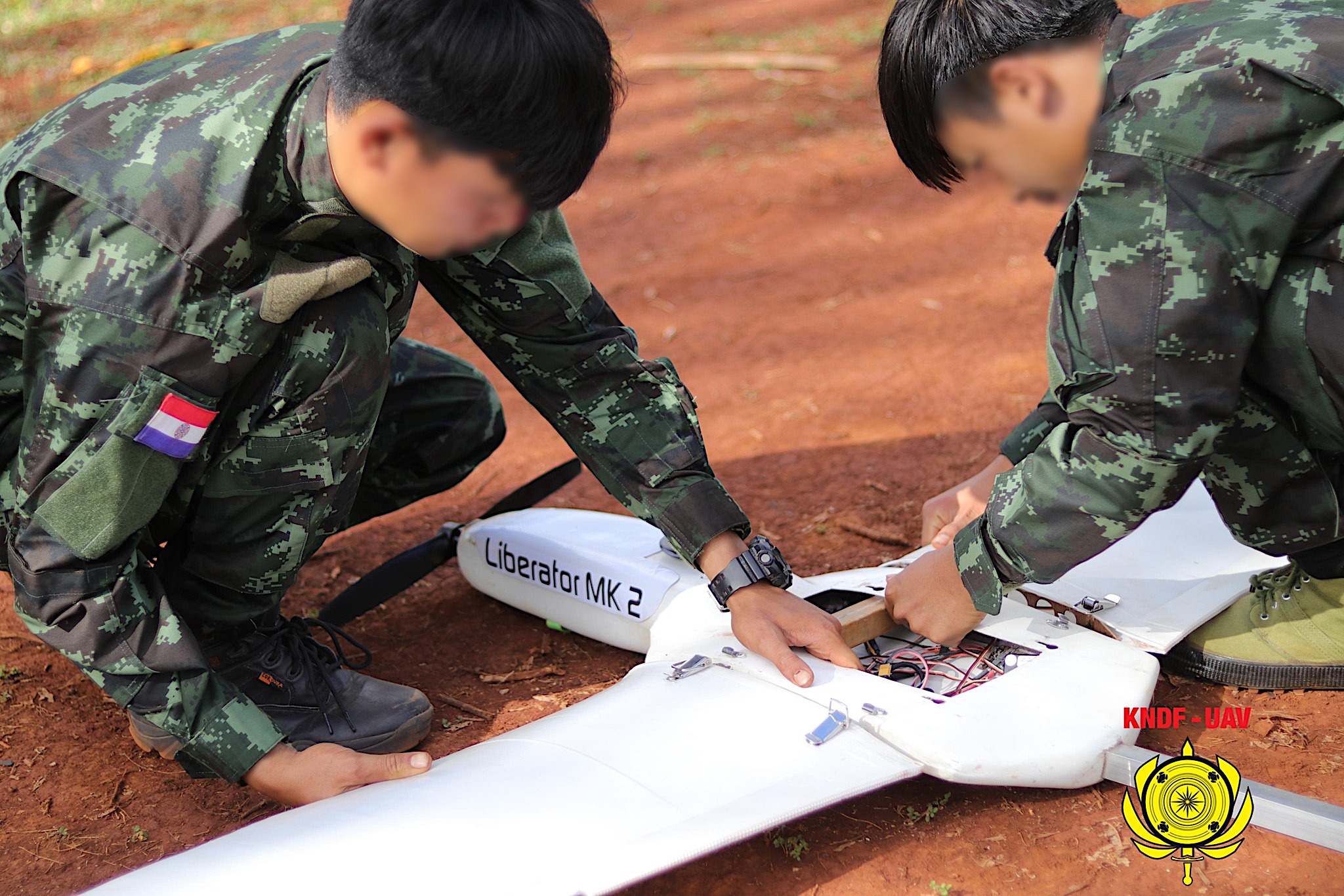
It has fought over 1,000 clashes with regime troops in Kayah State and southern Shan State over the past two years. Most of the fighting has taken place in Kayah’s Demoso, followed by Shan’s Pekon Township. The KA has also joined the KNDF in fighting the regime. The clashes have yielded nearly 600 weapons seized from regime forces, the groups say.
They have also seen a total of 2,065 junta soldiers killed, while the KNDF has suffered 153 fatalities, according to the KNDF’s report on two years of fighting. It said that 152 civilians also died in the clashes.
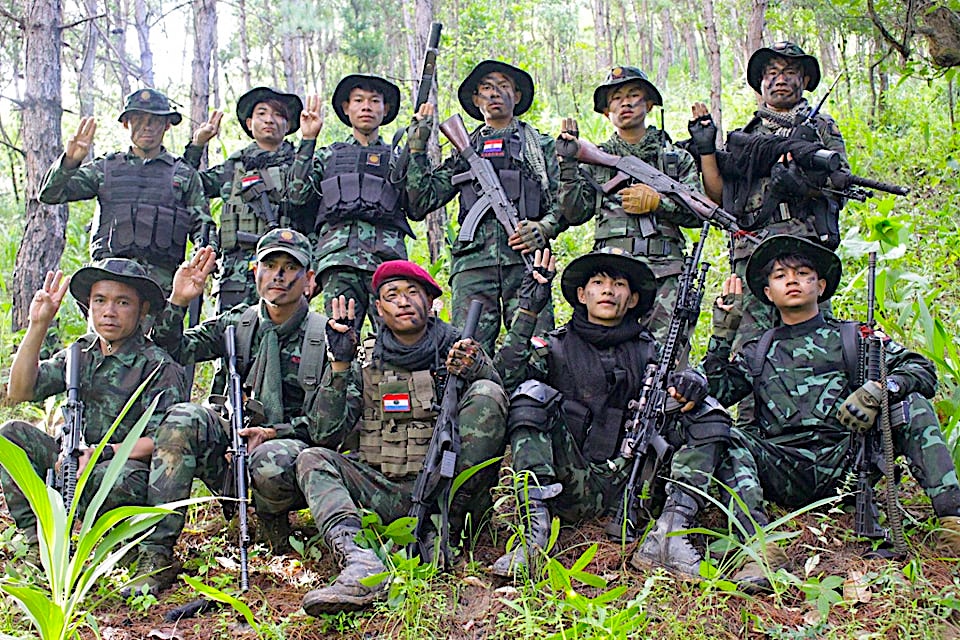
The junta’s administration currently functions only in the Kayah State capital of Loikaw, while Demoso, Hpruso and Bawlakhe are deserted with only regime troops and their families living there, according to the report.
“I believe we will achieve a significant military victory in 2023, and I urge KNDF comrades to work harder,” Khun Be Du declared recently. “We are grateful to the people. We need to prevent racial and religious hate speech. We will provide more helmets and bulletproof jackets to protect our comrades.”


